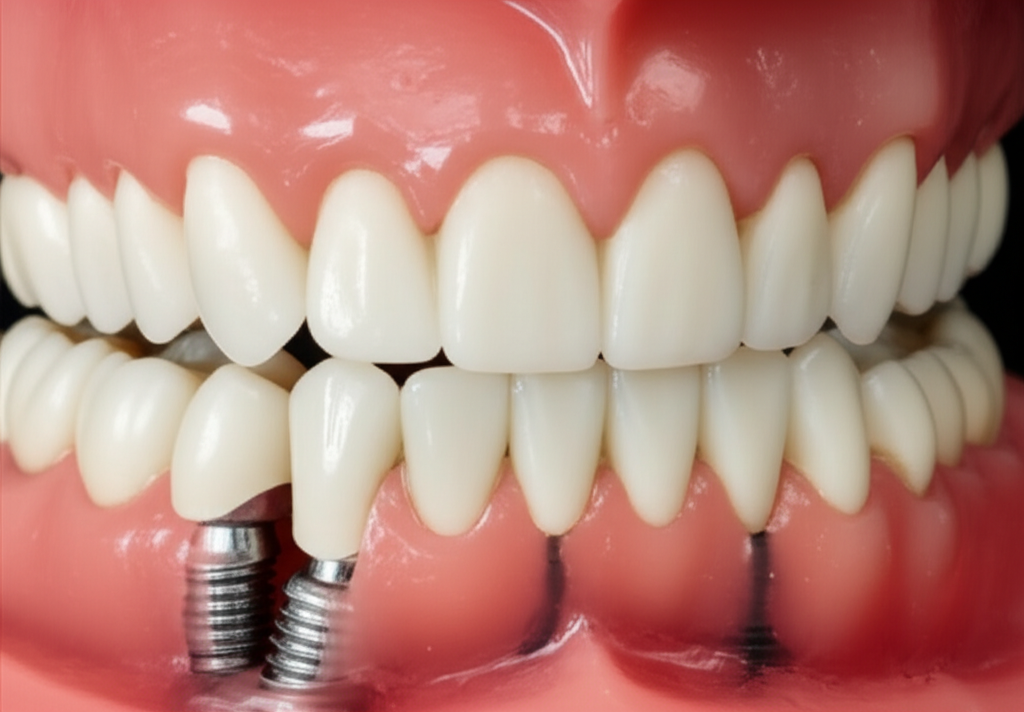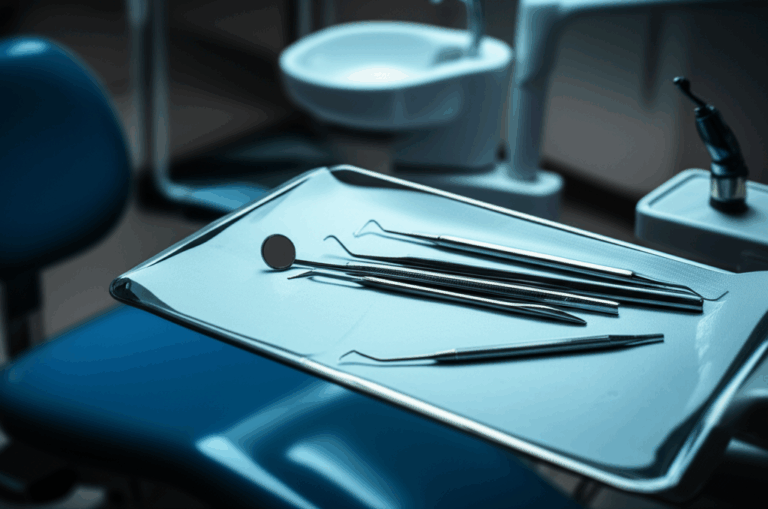
What Are All-on-6 Dental Implants? Your Complete Guide to Permanent Full Arch Restoration
Table of Contents
Outline Overview
Before I start, here’s how I’ll walk you through my journey and what I found out about All-on-6 dental implants:
- I’ll tell you about my problems with losing teeth.
- Then, I’ll explain what All-on-6 dental implants actually are and how they work.
- You’ll see every step of the process—nothing left out.
- I’ll share the good things I found out about this and who it’s best for.
- We’ll look at how All-on-6 compares to other types, like All-on-4.
- I’ll talk about costs, healing, and care after the treatment.
- Then, I’ll be honest about possible problems.
- In the end, I’ll give advice on deciding if All-on-6 is a good idea for you.
Introduction: Rediscovering My Smile with All-on-6 Dental Implants
Losing teeth—even just one—can really change your life. For me, broken and missing teeth plus old dentures made me feel embarrassed and miserable. I spent years trying to get used to loose dentures, always worried about my smile and what foods I could eat.
At some point, I started looking for a better, real fix. Removable dentures just didn’t seem right for me—they felt fake, moved a lot, and over time my jawbone started to shrink. I wanted something strong enough so I could laugh out loud, eat anything I wanted, or bite into an apple like I used to.
That’s when I found out about All-on-6 dental implants—a new way to get a full set of solid, good-looking teeth held by just six implants per jaw. If you’re stuck with dentures like I was, I wrote this guide for you. I’ll tell you everything I learned, starting with what All-on-6 really means and what it’s like to go through the procedure.
What Exactly Are All-on-6 Dental Implants?
Let’s make this clear. When my dentist first said “All-on-6,” I had no clue what that meant. Does the number matter? Is it really different from other choices?
Here’s what I figured out:
- All-on-6 means one whole row of new teeth (top or bottom) is attached using just six dental implants.
- These six implants are like “fake roots”—little titanium screws—put carefully in strong parts of your jawbone.
- Special connectors, called abutments, link every implant to a new row of teeth (called a bridge).
So instead of getting one implant for each lost tooth, All-on-6 uses six well-placed screws to hold a full row—top or bottom. Unlike old dentures, these teeth stay put. You don’t take them out at night. You brush, eat, and smile just like before.
Simple Parts:
- Dental Implants: Strong, body-safe metal posts.
- Abutments: Connectors between the implants and your new teeth.
- Prosthetic Bridge: Your new, permanent teeth—made out of tough stuff like zirconia or acrylic.
When I looked at single dental implants or regular dentures, All-on-6 seemed “just right”: fewer screws than replacing every tooth, but more solid than take-out dentures.
How Do All-on-6 Dental Implants Work? The Procedure Explained
At first, I thought the process sounded scary. But looking at each step, one at a time, made it simple. Here’s how it happened for me, from the first visit to my new set of teeth.
Step 1: First Meeting & Planning
My first appointment was all about info. The dental office took a full look at my health and history, then got 3D pictures of my jaw—using a special scan so they could see all the bones.
This planning isn’t just for show. It helps them decide where to put the implants, if I’d need extra bone, and how my new smile would look. Some clinics even use fancy digital dental lab tech to make a model before surgery.
Step 2: Putting in the Implants
On the surgery day, I had anesthesia—my dentist and I picked a type that made me feel calm but awake. There are other kinds, from just numbing the mouth to full sleep.
The dentist put in six implants in planned spots in my jaw. Some dentists use custom, 3D-printed guides for extra accuracy.
If you have strong enough bone, you could get a temporary set of teeth the same day—called “Teeth in a Day.” I wanted to smile right away, and this part really helped.
Step 3: Healing
Now comes waiting. During healing, my jawbone grew around each implant to make it really strong. This healing time is usually three to six months. I had to eat soft foods for a while, but I knew I’d get back to normal soon.
Step 4: Abutments & Final Teeth
After my dentist made sure everything was healed, they put on the abutments and took molds for my final bridge. I got to choose between really strong zirconia (looks and acts like real teeth) or good acrylic (feels real but not as tough).
A few weeks later, I went back and my permanent teeth were attached. Seeing the teeth click in—strong, normal-looking, and feeling right—was the best feeling.
Step 5: The Whole Timeline
From first scans to my forever smile took me about five months. Some go faster, some slower if bone work is needed, but usually it’s three to nine months.
Benefits of Choosing All-on-6 Dental Implants
I’ll be real—choosing All-on-6 took some guts and money. But after I saw what changed, I knew it was worth it. Here’s what I noticed and what studies show:
1. Super Strong & Useful
These teeth stay put. I eat anything, any time, and never worry about them slipping or falling out. Eating chewy foods or speaking is just as easy as with my old teeth.
2. Great Looks
My friends and family couldn’t tell the teeth weren’t my own. That gave me back my confidence.
3. Helps Your Jawbone
This was important for me. Regular dentures make your jawbone shrink over time. All-on-6 implants keep your bone healthy so your face shape stays the same.
4. Made to Last
The implants themselves last up to 98% of the time, and the bridge lasts 10–15 years or more if you look after it.
5. Easy to Live With
No more soaking or sticky glue. I wake up with teeth, eat and brush like normal. Way easier than dealing with dentures!
6. Quick Smiling
One big plus—right after getting my temporary teeth, I could smile and talk normally again. I didn’t have to wait months hiding my mouth.
If you’re tired of dentures like I was, these plus points are huge.
Am I a Candidate for All-on-6 Dental Implants?
You might think, is All-on-6 good for everybody? I wondered, too. Here’s what I found:
Best Fit For
You’ll likely do best with All-on-6 if:
- You lost most or all teeth in one or both jaws.
- Your last few teeth are in bad shape, or you have serious gum disease.
- You hate dentures.
- You’ve got enough good jawbone; if not, sometimes bone can be added.
Things That Matter
Your dentist will check:
- How much bone you have: Sometimes you need more bone, or a lift in your upper jaw.
- General health: Problems like serious diabetes, some diseases, or heavy smoking can slow healing.
Why a Pro is Needed
You need a really good dentist for this job—not just any office. They’ll look at your 3D scans, health, and sometimes work with expert china dental lab teams to make the plan just for you.
I asked every question I could think of. It made me feel ready and sure.
All-on-6 vs. All-on-4 Dental Implants: What’s the Difference?
I got pretty confused comparing all these “All-on” choices. Here’s what finally made sense:
More Implants = Stronger Teeth
- All-on-6: Six implants per row means more strength, good for bigger jaws or people who clench their teeth.
- All-on-4: Four implants per row—good if you don’t have much bone.
Bone Needs
All-on-6 spreads chewing out more, so it works well even if your bone is not perfect.
Which to Pick?
Dentists usually say All-on-4 is great if you’ve lost bone or can’t get more. All-on-6 is better for more power and long life, if you can do it.
Price & Simplicity
All-on-6 costs more at the start, but I felt it was worth it for the strength and years of use. For some, All-on-4 is cheaper and works just fine.
Cost of All-on-6 Dental Implants: What to Expect
Let’s face it—how much does it cost is a big question. I wanted to know too. Here’s what I found after lots of calls and online searching.
What Changes the Price?
- Where you live: Big cities usually cost more than small towns.
- Type of teeth used: Zirconia is tougher and costs more than acrylic.
- Extra steps: Things like pulling teeth, adding bone, or lifting sinuses all cost extra.
- Lab Work: If your teeth are made in a really good arch dental lab, you’ll pay more but usually get better results.
Typical Costs
- Most places told me $20,000–$45,000 per jaw (top or bottom), with everything included. That’s a lot, but it covers scans, surgery, all teeth, and every visit.
Insurance and Ways to Pay
Dental insurance almost never covers the whole cost, but you can often get payment plans or choose to pay monthly. Some offices let you pay over time.
To me, it’s spending money on my life, health, and happiness—not just my mouth.
Recovery and Aftercare for All-on-6 Implants
Getting new teeth is a new beginning, not the end. Here’s what happened after my surgery.
Right After
- I had a swollen face and some pain for a few days, but nothing bad. Ice and pain pills helped a lot.
- I stuck with soft foods: smoothies, soup, yogurt, and pasta—kinda boring, but worth it for healing.
Keeping Clean
Cleaning is super important. My dentist showed me some special brushes and tools. I went for pro cleanings every few months. The bridge needs brushing a different way, but I got used to it fast.
(For tips on brushing and cleaning, this dental care and teeth overall health guide helped me a lot!)
Follow-Ups
These checkups are a must. The dentist checks your implants, bridge, and gums, and can fix small issues early so they don’t get big.
Long-Term Care
If you brush, floss, and go for cleanings, the All-on-6 bridge can last 10–15 years, even longer. The screws themselves can last the rest of your life.
Potential Risks and Complications
No surgery is totally safe, so I want to be honest about possible problems.
What Could Happen?
- Infection: Just like for any surgery, but following rules keeps it low.
- Implant failure: Pretty rare (5% or less), but more likely for smokers or those with poor bone.
- Nerve trouble: Very rare, but can happen if screws go too close to nerves.
- Broken bridge: People who grind their teeth and don’t use protective mouthguards can break or chip the new teeth.
What I Did to Avoid Trouble
- I picked a dentist who does these often and partners with a good lab.
- I followed every after-surgery rule.
- I went to every checkup.
Making an Informed Decision: Is All-on-6 Right for You?
Looking back, I’m so glad I gave myself this chance. All-on-6 dental implants are the best thing I did for my health, my looks, and how I feel about myself.
Here’s my advice for you:
- Look at the good parts: Strong teeth, nice looks, healthy bone, and easy daily life are a big deal.
- Get a real checkup: Only a skilled implant dentist can say for sure if All-on-6 or another choice is better for you.
- Take your time: Bring your questions. Ask about every step—scans, surgery, tooth types, labs, and aftercare.
You should be able to smile, eat, and talk with confidence. All-on-6 gave that back to me. If you feel lost like I was, maybe now’s the time to check this out and get back your real smile.
Got more questions? Find out more about teeth information. The best move is to talk to a caring dentist who knows about implants and will listen to what you want.
Everything I wrote here is from what I lived through and what I read and heard. Always check with your dentist to get the latest, personal advice for you.








